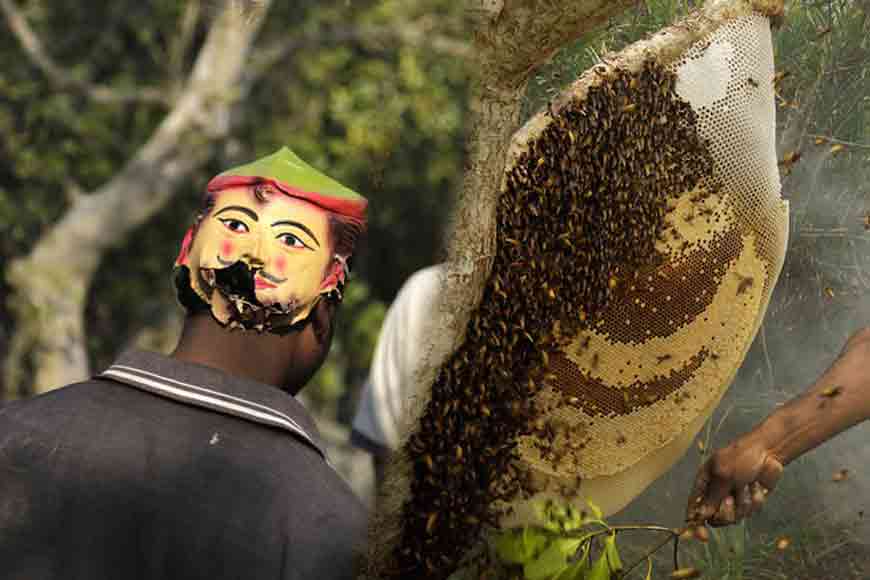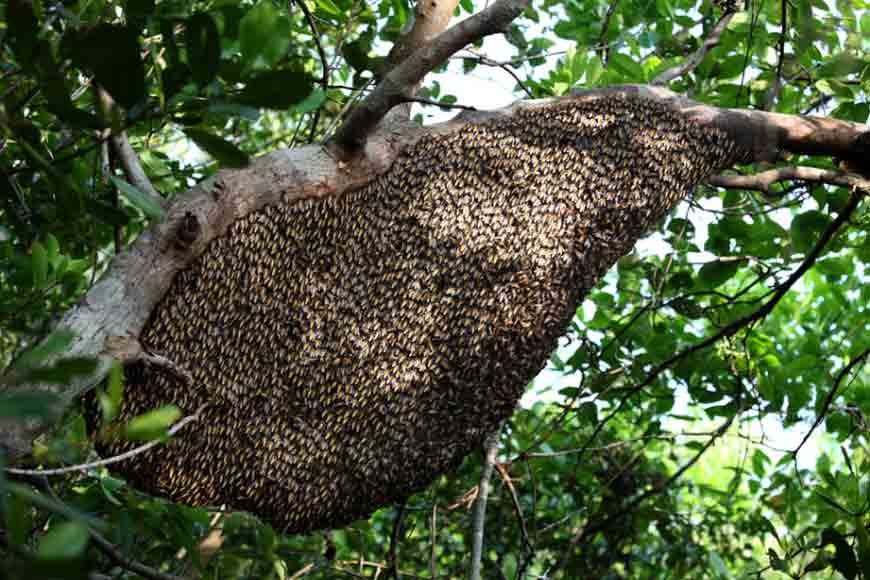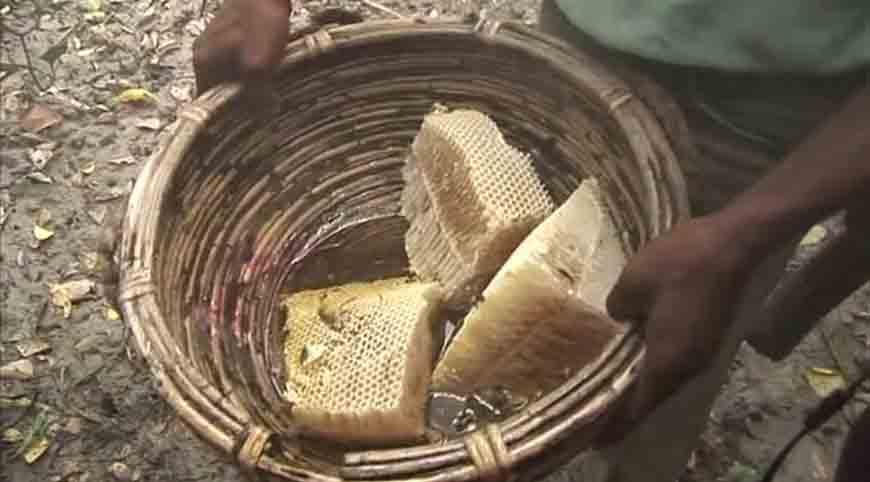The ‘Brave Honey Collectors’ of Sunderbans

Sundarbans is world famous for its honey.Two varieties are available.The most famous is whitish in colour and is obtained from Khalisha Flower, found in the deep interiors of the forests.The other is slightly yellowish and is obtained from Keora, which is a Mangrove tree. Zafar told us the tale of the brave Moulies or honey gatherers. Every year in spring, they would brave all dangers and their lives, to gather the precious honey, which was a means of earning their livelihood.They always travelled in bands, armed with primitive weapons such as axes, tangis, ballams, bows and arrows.

Stocked with basic ration for more than a month and under the leadership of an experienced Moul, they would set sail for the deep forests of Sajnekhali, Sudhanyakhali, Do Banki and other core areas in small primitive country boats and would anchor in a suitable area in the mangrove forest. Before setting sail, prayers and offerings to Bonbibi was a must. The entire village and family members would gather to see the husband,the son, the brother off and to pray for their safe journey. No one knew who would be back and who would be lost for ever in the forests.As long as the Honey gatherers, Fishermen and woodcutters would not return, the women of the family would come to Bon Bibi Than and Boro Gajis, light candles every evening praying for their safe return.

Usually boats were anchored close to each other, for safety. Not only were they in danger from Dakshin Roy and his subjects of the deep forest,they feared the worst predators the two-legged ones. Pirates are plenty in Sundarbans. They patrol the jungles in boats and hide in the creeks.Taking advantage of the waterways they travel to and fro, between the Indian and the Bangladesh sides of Sunderbans. Their movement can only be compared to that of the King of the Forest, who moves between the two countries without a visa or passport. After alighting, again Puja is offered to Bon Bibi. Then the men would alight in bands and move through the forest through dense undergrowth, beating drums,moving in close single files with lighted mashals. They often wore a mask of a tiger at the back of their heads.Four people would stay on the boat to guard it. Often, they would find despite precautions, someone from the middle of the file would be missing. His absence would be noticed suddenly, without any sound or fore-warning. His colleagues realised that death had been stalking them silently and stealthily since long. At the first opportunity, the tiger had chosen his prey and had carried him off to his dinner table! The operation had been so smooth, that even the next man had not noticed until it was too late. Often after returning to the boat, they would find one of the guards gone without the others knowing. Only the Pug marks of the Tiger on the mud near the boat would tell what happened. The boats with fisher men and crab fishers had the same story to tell. At night, if the boat is guarded from the land side, the cunning Royal Bengal Tiger, would get into the water and swim to the back of the boat and perform his operation from there. Every year, many people die from tiger attack and snake bites in Sunderbans.
The Royal Bengal Tigers are not only powerful swimmers, but also extremely cunning. They prefer the softest of prey, humans. Deer is difficult to catch, so next to humans they prefer the wildboar. Human greed has led to poaching of deer and boars, leading to depletion of tiger’s food and forcing them to enter human settlements. In areas like Kalitala in Jogeshganj in Hingalganj block, people do not go out at night for fear of the Tiger, which often swims across the river from the adjacent core area and lie inside the cowshed feasting on the cattle.The tiger has a unique way of catching crabs.It sits quietly at the river bank dipping its tail in the water. As soon as a crab is foolish enough to cling to the tail, out comes the tail and Dakshin Roy is ready to enjoy a Crab snack.

Royal Bengal Tigers even feast on honey and have developed a unique way of circumnavigating the formidable Bees of Sundarbans. After the low tide, when the water level goes down, the tiger prepares himself for honey-eating. He rolls himself on the wet mud until his body is covered with mud. This when it dries up forms an armour round the Tiger’s body which the Bee stings cannot penetrate.The cunning tiger then chooses a low tree with a beehive in the Mangrove forest. He then runs and jumps high and with one mighty trust of the paw fells the hive to the ground and runs away at full speed and lies low in the dense under growth. A few bee stings cannot penetrate his mud armour. He waits patiently till the bees have dispersed and finally returns to his booty when all is clear and enjoys the honey.

It is my misfortune that although I have been to the Sundarbans several times, including the core areas, Dakshin Roy has not been kind to me. Several times I had the opportunity, but he eluded me by few minutes.I had to be satisfied with the fresh pug marks on the mud.The only way to see the tiger is when he is travelling,swimming from one island to the other. In order to deter the tiger from entering the human settlement waist high blue net are put up on the river bank. The king of the forest is too clever for the silly humans. He quietly searches for a tear,an opening or cut in the net and he is out and swimming to the opposite bank, in search of a hearty meal.










